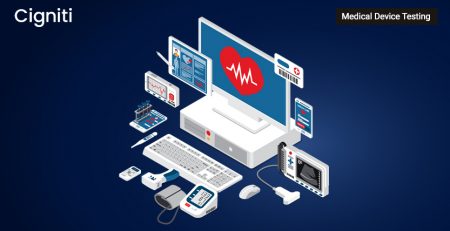Is the Pharma industry really prepared to go Agile
Investments in pharmaceuticals sector have always been a risky affair. The high chances of failures and lower chances of good returns make good reasons for this. If we look at the numbers, as per a report, the R&D returns for twelve large-cap biopharma companies have decreased to 1.9% in 2018 from 10.1% in 2010.
In addition to the rigid and complex working structure, pharma companies have to deal with the ever-growing pricing pressure among changing government regulations, significant patent losses, and growth of generics and biosimilars. Moreover, there is fierce competition from both internal as well as external forces of the pharma market.
When Amazon, a tech giant that is completely unrelated to healthcare and lifesciencs, acquired PillPack last year, it created a disruptive frenzy across the industry. The acquisition demonstrated Amazon’s strong understanding of customer experiences. This deal also acted as a wake-up call for the entire pharma sector to break away from the legacy systems and adopt more customer-centric and user-friendly practices.
As a matter of fact, several researches suggest that in order to transform their R&D functions, in order to make their process efficient, pharmaceutical companies must bring in Agile processes. By integrating Agile deep within the organizational core, pharma companies will be able to tackle with sudden internal changes as well as the volatility of the external environment.
Changing the outlook
The pharma industry is in the life-changing and life-altering business. Its ability to deliver solutions quickly has a direct impact on the survival expectancy of people suffering from critical diseases.
As the sector prepares to transform digitally, it should also change its approach towards innovation. Pharma companies who center their focus on their patients will be the ones who succeed in the future. One of the biggest reason for this is the shift to value-based care.
Digital has become mission-critical for the industry. For the pharma sector to evolve digitally, it has to leverage on the latest technologies and the available data pool. To do so, there is an urgent need for changing the leadership style as well as the organizational culture. The organizations will have to establish, track, and measure key performance indicators (KPIs) across the processes to channel standardization and stability across the development cycle.
As the pharmaceuticals spend globally is expected to decrease up to 3.1 percent this year. At the same time, sophisticated technologies such as big data analytics, ML-driven Artificial Intelligence, and RPA are set to enhance the efficiency of the R&D processes.
The advancing technologies and digital adoption can empower the sector to fulfill the unmet needs of their patients. However, before the pharma companies set out on their Agile transformation journey, they will have to consider their business model, patient objectives, and then accordingly approach their drug development strategy.
The Agile perspective
Pharmaceuticals companies generally operate on cost-based models where the key focus was the return on investments. As the healthcare and lifesciences sector is making value-based care a priority, patient experiences take the primary attention.
With Agile adoption, quality in care becomes the primary objective for the pharma companies worldwide. Apart from standardizing and stabilizing the processes with pre-detemined KPIs, Agile transformation will enable the R&D teams to bring in flexibility. As they would be operating on a focused line of action, they can quickly respond to any changes that come in at a later stage without causing the entire process to go haywire.
Despite the multiple benefits, adoption of Agile in pharma R&D sector will have to face some major challenges such as:
- Rigid development models: The R&D teams in pharma companies are usually habituated of working in a specialized, rigid, and sequential manner. The flexibility of Agile methods can be somewhat disorienting for them.
- Tight delivery pipelines: The professionals in the sector have a risk-averse mindset, which is necessary to work in a volatile environment such as pharmaceuticals. There are long delivery pipelines, high investments, and greater risk of failures.
- Complex data: On one hand, having a large pool of data equates to having a huge mine of gold. On the other, it presents the challenge of deploying required resources that can dig into the mine, analyse and identify patterns among disparate lines of combinations, and extract valuable resources.
Agile in pharma can significantly reduce the drug development and delivery timelines, while, enhancing the quality and efficacy of the end products.
Some of the key benefits of Agile adoption and digital transformation for pharma companies are:
- Ability to better engage with the patients by using data-driven processes
- Gaining deeper insights from clinical trials
- Reducing the lead time for drug delivery to the patients
In the last ten years, the average cost of bringing a drug to the market has increased by 140 percent. With Agile, it will be possible to accelerate the drug development cycle as well as to improve quality and compliance. Development costs are expected to reduce up to 25%.
In order to truly harness these benefits, the pharma R&D teams will have to:
- Take the approach of design thinking that should be integrated into the end-to-end drug development program.
- Form cross-functional sub teams as per the delivery requirements to improve development speed and gain research insights quickly.
- Automate highly repetitive processes as well as data analysis and insight generation
- Establish predictive modeling to facilitate fact-based, quick decision making
- Empower the teams with digital and tech capabilities to accelerate development
- Shift the cultural mindset to iterations to ensure quality from the start
To sum up – a holistic transformation
The exponentially growing data is making is infeasible for pharma sector to store everything locally. The industry will have to adopt cloud computing along with Agile practices to actually leverage the promises of digital transformation.
While the pharmaceuticals industry is looking to bank upon the benefits of digital and Agile, there are still several challeneges that it needs to overcome. In order to be really prepared for the Agile transformation, it is advisable that they set up a center of excellence that establishes a highly standardized quality assurance and testing process. A testing center of excellence in the pharma sector will create a holistic ecosystem comprising of people, processes, technology, and infrastructure.
Cigniti’s Pharma Testing CoE team provides expert, end-to-end testing support. We ensure compliance with most of the required regulatory agencies by leveraging the strong pharma testing expertise of its team. Talk to us.





Leave a Reply